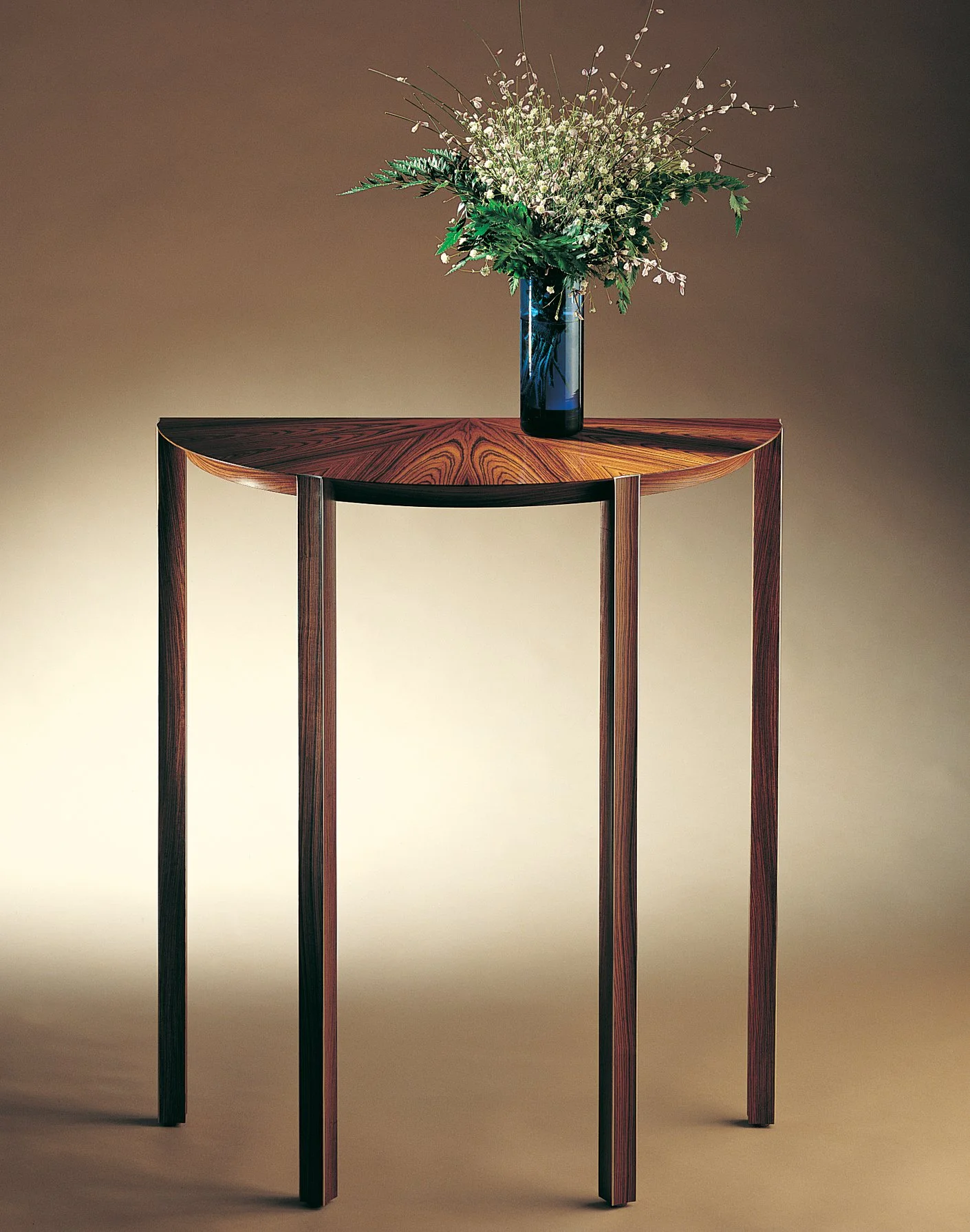The Moments That Made Silverlining: Mark Boddington Reflects
Forty years ago, a nineteen-year-old student named Mark Boddington received an acceptance letter that would change his life. It was from John Makepeace’s renowned furniture school at Parnham House, a place where a new generation of makers were redefining British craft. “It was one of those moments where the hair stands up on the back of your neck,” he recalls.
At Parnham, Mark’s fascination with materials, nurtured since childhood watching joiners in his father’s brewery polish Cuban mahogany bar tops, became a true vocation. Two years later, at his graduation exhibition at the Royal Show, his father’s advice proved prophetic: Position, position, position. His stand was the first on the left in the marquee and drew immediate attention from collectors. Within days, he had secured eighteen months of work. Silverlining was born.
The Former Cow Shippens Turned Furniture Workshop
Back in Cheshire, Mark sought a workshop that felt rooted in the countryside rather than in industry. He wrote to several landed estates, and the Grosvenor family offered him the perfect space: a cluster of disused cow shippens with the cattle names still chalked on the walls. He spent the first three days transforming them into a functioning workshop. From those humble beginnings to today’s 44,000 square feet, Silverlining’s story has remained one of growth grounded in authenticity and craft.
Those early commissions carried the fledgling business through its first years, until a car accident left Mark with a broken femur and thirteen weeks to recover. The time to reflect led to one of Silverlining’s first design breakthroughs. With a metal nail reinforcing his leg, he wondered, if it is strong enough for bone, why not furniture? The result was a collection of elegantly slender pieces strengthened internally with metal rods, combining engineering ingenuity with the poetry of form.
By the early 1990s, Silverlining’s reputation had crossed the Atlantic. On a flight to Los Angeles, Mark began a conversation with a fellow passenger who listened closely but said little. As they landed, he asked for a business card. Eighteen months later, the call came. He was Kevin Costner’s architect.
What followed were commissions for David and Iman Bowie, Tom Ford and Madonna. One Japanese client ordered more than a hundred chairs and several dozen tables when the team was still only six people. “We stored the chairs in the loft and passed them down one by one when it was time to ship,” Mark recalls. Each project stretched the team’s limits and deepened its pursuit of perfection.
Then came another call that would redefine the company’s path. A former client who had joined a leading yacht design studio asked for help on a complex project. It was Silverlining’s first yacht commission, demanding new approaches to construction and materials while maintaining the same level of refinement that had become its signature. That partnership opened the door to the world of superyachts. Today, nearly half of the company’s work is at sea, and Silverlining has been exhibiting at the Monaco Yacht Show for twenty-six consecutive years.
By the early 2000s, Silverlining’s work had evolved from exceptional furniture to statements of design philosophy. In St James’s, London, the exhibition Future Perfect: A Manifesto for 21st Century Craftsmanship introduced three pieces that challenged expectations of what furniture could be. Among them, The Infinity Table stood out for its technical precision and sculptural presence. It marked a turning point that led to the creation of Studio SL, Silverlining’s in-house design studio.
Studio SL now brings together a collective of designers supported by a dedicated R&D department that continues to explore materials and techniques at the edge of possibility. The company employs more than sixty craftspeople, many of whom began as apprentices and have grown into masters in their own right. Over the decades, Silverlining has trained more than two hundred makers. “That is part of the legacy,” says Mark. “We are not just making furniture. We are ensuring a future for craft itself.”
This year, Studio SL unveiled Layers in Time in London, its first limited edition collection. The seven pieces reveal the studio’s design language, combining experimentation with mastery refined in the workshop over decades. It marks an evolution from bespoke commissions to collectible design while remaining anchored in craftsmanship and material intelligence.
Looking ahead, a new book will soon be published, titled Can It Be Done? It captures four decades of innovation and collaboration, celebrating the belief that great design emerges from curiosity and trust.
Reflecting on the journey, Mark says his greatest pride lies in the people around him. “I have always wanted to be surrounded by those who are far better than I ever was, whether in design, craftsmanship or R&D. That is what truly defines Silverlining. It is the talent of our people, past, present and future, that has allowed us to build something remarkable.”
From the chalk-marked walls of the first workshop to yacht interiors, Hollywood commissions and the world’s most beautiful homes, Silverlining continues to ask the same question that began it all: what comes next?
The journey continues.
Watch the full video by clicking below.
Subscribe to our newsletter
Sign-up to receive our newsletter and discover our stories, collections and latest innovations.






